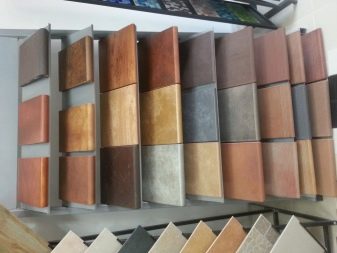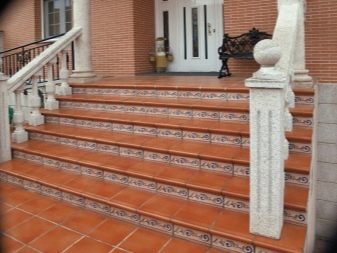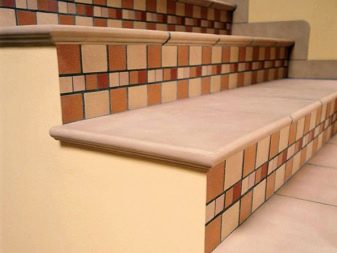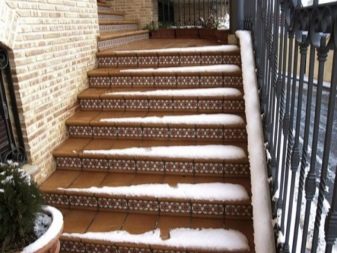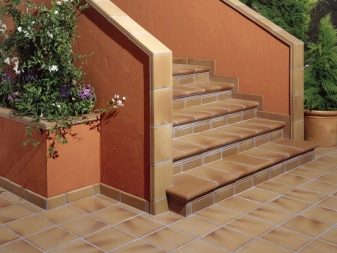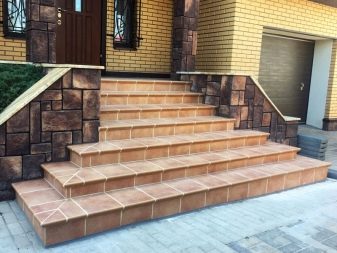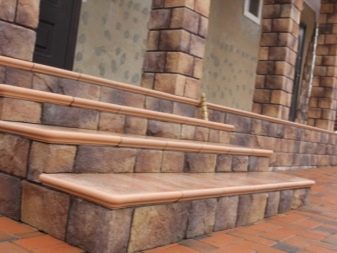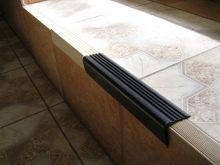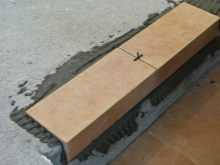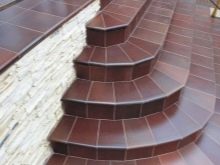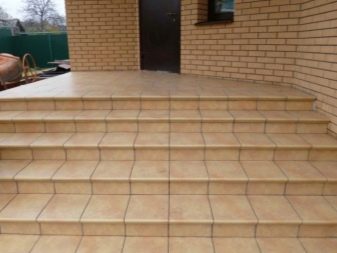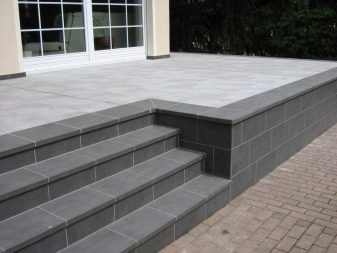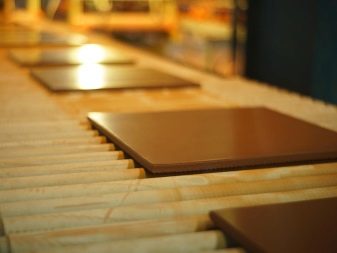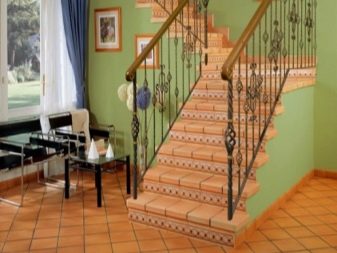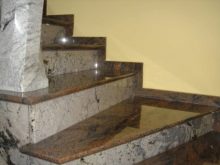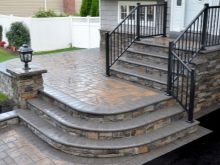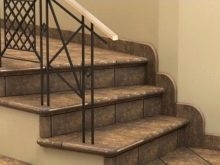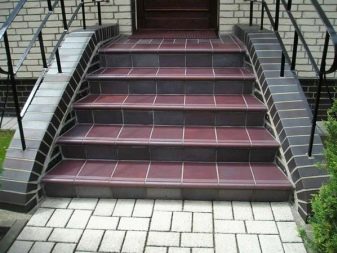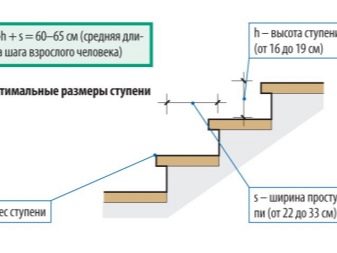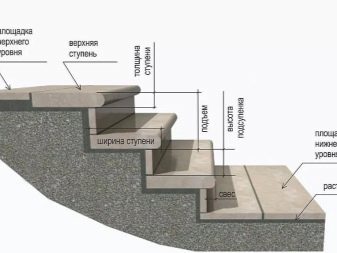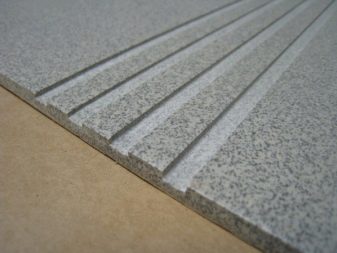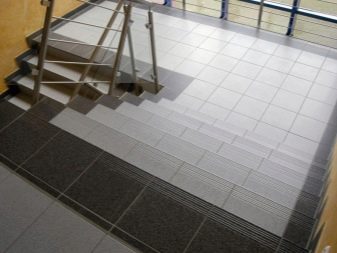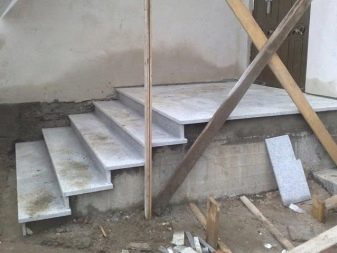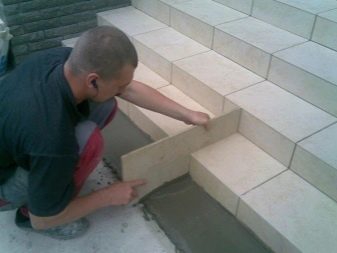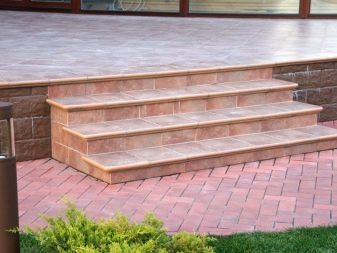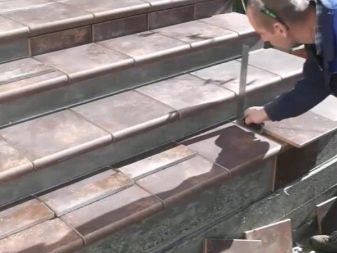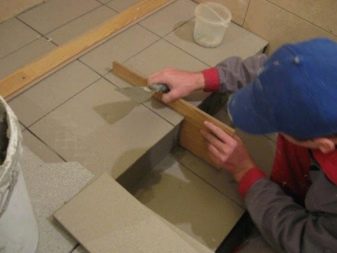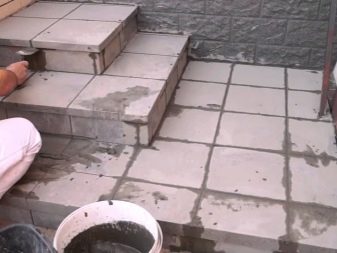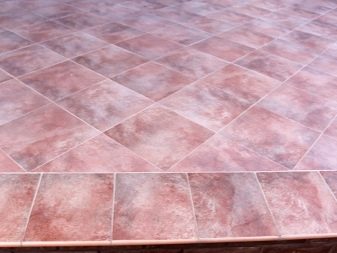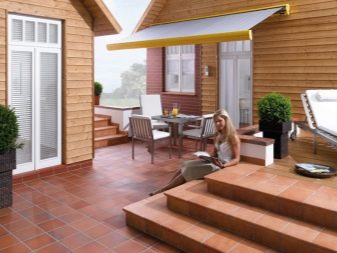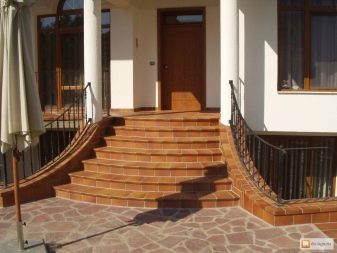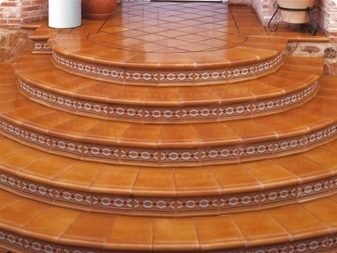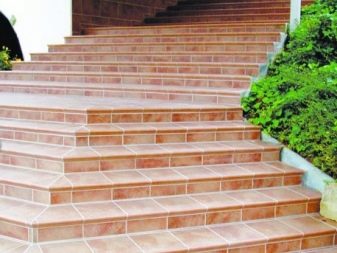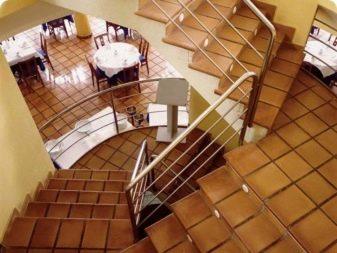Clinker steps: types and characteristics
Being engaged in the selection of materials for facing the facade, it is always important to take into account the features of the element that is to be finished. So, the stairs are considered to be one of the most difficult in the work of a tiler. In addition, it is necessary to take seriously the choice of future coverage. Today there are no difficulties with this, but it is still recommended to take into account the impact of external factors that the steps are subjected to daily.
That is why it is worth stopping the choice on the clinker tile.
It looks very impressive and at the same time has all the necessary qualities for long and active use.
What it is?
Clinker is a type of ceramic tile. This material is fired during production only once.It is made from special types of clay. Paint and fluxes are added to the mixture. To tile got its final form, use the method of extrusion, as well as pressing, but more often you can meet it in extruded form.
Advantages and disadvantages
Clinker tiles originate in the XIX century. At that time, the Dutch used it for housing construction, as well as for paving roads. Then the knowledge of its production technology was transferred to European countries and America. Thanks to the use of clinker at the time of manufacturing shale clays of German origin, one of its most important advantages was frost resistance.
By making clinker steps, one can find other undeniable merits.
Among them are the following:
- High level of resistance to external factors that can cause some damage;
- Durability due to which this product has a long life;
- Water absorption;
- Easy to care.
It should be added that when facing a street porch, the surface should be anti-slip. Clinker is also excellent at this condition.
Despite these positive aspects, this material is not without some drawbacks. But their importance is irrelevant to refuse to choose in his favor. This is a fairly high cost of production, although it pays off and is covered by a long period of operation. Another negative point is the lack of a wide range of different tile designs. However, what is available today on the market of tiled products is enough to make the choice of clinker tiles for any staircase or porch. Based on this, we can conclude that this material is completely reliable and explains all the costs of its purchase and installation.
Species
The clinker plates to be used for ladders cannot boast a variety of choices. However, the production of products is carried out in several formats.
Of these, the most popular are:
- With a Florentine profile and corner;
- Steps with a notch;
- Angle under the step;
- Angular and ordinary steps;
- Private and corner plinth.
Such a variety of choice of formats allows you to choose tiles for the design of any steps.Moreover, it makes it possible to carry out the finishing of even complex stairs in a constructive respect.
In addition to forms, more types of clinker tiles are distinguished by size and color.
Dimensions
Like most finishing materials, clinker plates are produced in various sizes so that designers have the opportunity to translate any ideas into reality. Often these products are offered in a standard size, the indicators of the sides of which range from 250 to 400 mm.
However, some manufacturers supply one-piece treads, the parameters of which are 1200x300 mm.
Colour
As for the color solution, there are no restrictions. You can easily pick up both white or black plates, and more interesting tones.
In total, four categories of clinker tile color are distinguished:
- under the brick;
- light;
- yellow;
- dark.
The choice of color is solely a matter of taste. Considering that the tile will serve for a long time, it is recommended to select its appearance, on which you will enjoy admiring for more than a decade.
Manufacturers
The undisputed leaders in the manufacture of clinker steps are Germany, Italy, Spain and Poland. It is these countries that produce the most high-quality and beautiful products.However, Russian companies also decided to start production of this material. Moreover, domestic products are not inferior in their characteristics to foreign ones. In addition, branches of well-known European firms are located in Russia.
In such branches, production takes place in accordance with European technologies. There is also a thorough check for compliance with quality standards. Thus, there is no doubt about the reliability of the clinker tile.
What to choose?
Before making a choice of a particular type of clinker tile, all its parameters and characteristics should be carefully studied, as well as more detailed information about the production technologies and the manufacturers themselves.
First of all, you need to take into account the location of the staircase itself, which is to be finished. If it is necessary to choose a facing material for use inside the house, then the requirements are softer than when choosing a clinker for outdoor work. Provided that the permeability of the stairs during the day is assumed to be quite high, it is better to refuse to use this particular material.Having ceramic properties, it will quickly become unusable due to frequent mechanical damage. In such a situation, porcelain or cobblestones can be a good alternative.
If such circumstances are not foreseen, then you can proceed directly to the choice of the tile itself. It is necessary to decide which type of steps is necessary - angular or ordinary.
There are three more criteria, which are recommended to make the choice of clinker for the steps:
- The choice of texture. Despite the fact that clinker does not differ in an abundance of various designs, there is still a sufficient amount of existing dressing. It can be smooth, shiny, rough and even with some additives.
- Grout. It should be the same color. In this case, the shade may differ from the tile itself.
- Cost Based on this factor, it is worth remembering that the low price of such products can only be in the case of marriage at work or forgery. In addition, it should be noted that the purchase is better to carry out in the shops of the manufacturer itself, since the same product will cost a bit more expensive from an intermediary.
Piling
Laying tiled products on the steps is quite a laborious process. At the time of installation, certain difficulties may arise that further complicate the whole action. Therefore, it is important to follow the planned action plan to avoid various troubles.
The first step is considered drawing up the markup. There are standard indicators of stairs (steps, porch). They say that the height of the steps should reach the limits of 15-16 centimeters, and their width - 30-35 centimeters. However, not all designs fall under these parameters.
To calculate the exact height indicators, it is necessary to measure the height of the entire staircase, and then divide the result by the number of steps. However, during the computation period, the complexity of the structure itself, as well as the binding of the screed to be flooded, should be taken into account. After all, it is a kind of continuation of the steps.
To simplify the process of tile installation is required to perform accurate calculations of all necessary parameters. That is, it is necessary to clearly design the steps so that when facing them with clinker, you do not have to cut tiles. That is why it is important to determine the size and shape.Not without reason, manufacturers took care of a variety of types of products precisely for these indicators.
So, if necessary, you can purchase a clinker tile with a notch.
In addition, if we are talking about street styling, especially with regard to the front staircase, here we should also take into account the sidewalls, which are the formation of the steps themselves. Therefore, the installation will be carried out both in the horizontal plane and in the vertical. Such nuances are also recommended to take into account during the implementation of the markup.
Having finished with a marking, it is possible to pass to acquaintance with technology of installation. It is worth noting that a certain exemplary technology in the work with this material does not exist. The process of laying clinker tiles is based on the technology of installation of other tile products that are used for facing steps.
There are two options for veneering:
- The first plates are mounted on the steps, and then - the steps;
- The second option is completely opposite to the first.
Using the first option, it is worth remembering about the exhibition of the desired slope. This is important because water drainage from the surface of the stairs depends on it.This angle is equal to 1.5-2.0%. This technique is used in cases where the cladding steps will be performed using ordinary plates that do not have corners.
The second option is the ideal solution when laying tile, which is equipped with shaped elements. If we are talking about profiles of the Florentine or angular type, then the first step is facing. In addition, the entire styling process is performed in a vertical plane. And only after that the facing of horizontal parts occurs.
It should be noted that at the time of installation of tile products is extremely important to use the level. With it, you can avoid possible errors and do the job with high quality and beautiful.
It is also necessary to highlight some points that are also of great importance when facing the steps:
- The layer of glue should not exceed a thickness of three millimeters;
- When laying clinker steps on the street, it is more expedient to use a glue solution with frost-resistant properties;
- There must be some distance between the tiles - the seams.
Guided by such simple tips, you can perform the installation of clinker tiles without much effort, and most importantly - qualitatively.
The final stage is grouting.The distance between the plates on the steps can reach 12 millimeters. Therefore, specially designed grouting material should be used for this purpose. It is produced on the basis of epoxy resin or cement. The mixture must be in a semi-dry condition. You can check it this way: squeeze a certain amount of the mixture, and if the material does not crumble at the same time, then the consistency is chosen correctly. Next, the resulting composition is uniformly applied to the surface and it is rubbed with a rubber spatula into the inner joints.
Qualitative result is possible only if all the rules are followed. Otherwise, you can face various unpleasant moments. To avoid this, it is recommended to carefully follow the advice of experts. In this case, special attention should be paid to the stage of marking and preparation of steps for subsequent lining.
Interesting options
Today the brick tile for facing of steps meets quite often. At the same time, it looks quite attractive, and it also perfectly copes with the effects of external factors, in particular, weather conditions, when it comes to street stairs. You should also highlight the good performance characteristics of this material.Due to the simplicity of care, the steps made of clinker tiles retain their external qualities, and their purification from contamination does not take much time and effort.
With the help of corner tiles from clinker, we managed to complete a beautiful staircase design.
All elements harmoniously complement each other, and selected colors are combined in their performance.
Another option is the angular facing of the porch. In this case, only some of the plates of the angular type are used, since the rank and file occupy the larger space. Such a combination emphasizes the beautiful execution of the entire structure, and the shade adds some luxury to the design of the facade.
Another implementation of facing the porch. This time in classic style. It is worth noting that due to the presence of manufacturers of clinker tiles with brick-like colors, the designer managed to give the overall design a complete look.
Due to the excellent characteristics and properties of the clinker tile, it is used not only for cladding small sections of the facade, but also for wide, steep stairs. In addition to the original execution of styling, it is worth noting the relevance of the color solution,which fully complements the design idea.
The interior of the premises is also quite often found stairs, decorated with clinker. In the photo - an example of one of them. In this case, the masters did not limit themselves to facing only the stairs, which, by the way, is notable for the complexity of its execution. The clinker tiles were used to finish the floor in the dining room, creating some coziness and romantic atmosphere in the interior.
At first glance, this is a fairly simple lining of the outer steps with the help of clinker tiles. However, upon detailed consideration, we must pay tribute to the designer, who achieved the original design of the facade by saving material and, accordingly, financial resources.
The brick tile can be used widely enough, and that range which producers can offer today enough to embody any design imaginations.
To learn how to install and install clinker steps and stairs, see the following video.



